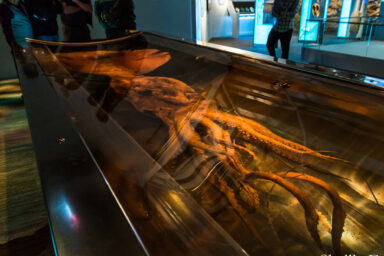US Renewable Energy Farms Outstrip 99 Percent of Coal Plants Economically: Study
|
Listen To This Story
|
PICKS are stories from many sources, selected by our editors or recommended by our readers because they are important, surprising, troubling, enlightening, inspiring, or amusing. They appear on our site and in our daily newsletter. Please send suggested articles, videos, podcasts, etc. to picks@whowhatwhy.org.
US Renewable Energy Farms Outstrip 99 Percent of Coal Plants Economically: Study (Maria)
The author writes, “Coal in the US is now being economically outmatched by renewables to such an extent that it’s more expensive for 99% of the country’s coal-fired power plants to keep running than it is to build an entirely new solar or wind energy operation nearby, a new analysis has found. … ‘Coal is unequivocally more expensive than wind and solar resources; it’s just no longer cost competitive with renewables,’ said Michelle Solomon, a policy analyst at Energy Innovation, which undertook the analysis.”
Inside a US Neo-Nazi Homeschool Network With Thousands of Members (Dana)
From Vice: “Earlier this month, while the rest of the country was celebrating the achievements of civil rights leader Dr. Martin Luther King, Jr., parents and children in the ‘Dissident Homeschool’ network opened a lesson plan and were greeted with the words: ‘As Adolf Hitler wrote…’ The contents of the MLK lesson plan would be shocking for almost anyone, but for members of the 2,400-member ‘Dissident Homeschool’ Telegram channel, this was a regular Monday at school.”
Marines Reactivate Guam Base to Boost Pacific Footprint (Sean)
From Defense One: “The Marine Corps has formally opened its first new base in 70 years: Guam’s Camp Blaz, which is to become a ‘strategic hub’ as the U.S. military expands its Pacific operations. ‘Forward, persistent presence is key to the regional security and stability in the Indo-Pacific. Marine Corps Base Camp Blaz is a critical part of that,’ Marine Corps Commandant Gen. David Berger said at the ceremony.”
Sweden Says It Has Uncovered a Rare Earth Bonanza (Laura)
The author writes, “A Swedish mining company said [this month] that it had found Europe’s largest known deposit of coveted rare earth metals, critical to many green technologies including electric vehicles, in a far northern part of the country within the Arctic Circle. The world’s production of rare earths is dominated by China. The discovery by LKAB, a state-owned company, creates the prospect that Europe could over time develop a domestic source of these minerals.”
Ready, Set, Share! (Sean)
From Science: “By 2025, new U.S. requirements for data sharing will extend beyond biomedical research to encompass researchers across all scientific disciplines who receive federal research funding. Some funders in the European Union and China have also enacted data-sharing requirements. The new U.S. moves are feeding hopes that a worldwide movement toward increased sharing is in the offing. Supporters think it could speed the pace and reliability of science.”
Smallpox Has Plagued Humans Since Ancient Egyptian Times, New Evidence Confirms (Mili)
The author writes, “Smallpox was once one of humanity’s most devastating diseases, but its origin is shrouded in mystery. For years, scientific estimates of when the smallpox virus first emerged have been at odds with historical records. Now, a new study reveals that the virus dates back 2,000 years further than scientists have previously shown, verifying historical sources and confirming for the first time that the disease has plagued human societies since ancient times.”
Scientists Discover Fantastical Creatures Deep in the Indian Ocean (Dana)
From NPR: “The bottom of the ocean is a tremendously inhospitable place to live. It’s dark, it’s cold, and the pressure is fierce. But the creatures that have evolved to live there are wondrous. … Led by the Museums Victoria Research Institute, dozens of scientists mapped the ocean floor of Cocos (Keeling) Islands Marine Park. Using nets dropped to as deep as six kilometers, they gathered thousands of specimens, ranging from the adorable deep-sea batfish to the terrifying highfin lizardfish to the unfortunately named bony-eared assfish. Voyage Chief Scientist Tim O’Hara estimated about a third of them could be new to science — and each is a marvel of deep-sea evolution.”




